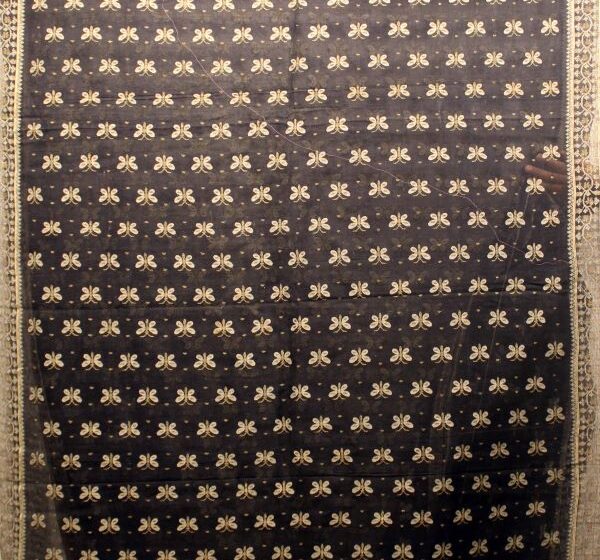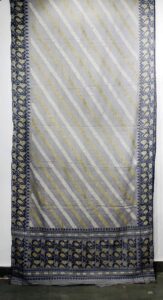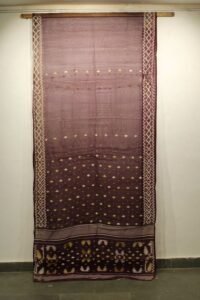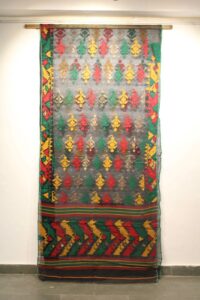Jamdani saree looks to a shining future

Team L&M
A Glorious Past and a Shinning Future of Dhakai Jamdani, an exhibition of museum quality Dhakai Jamdani sarees from the collection of Siddhartha Tagore (Director, Art Konsult Gallery) from the late 19th century woven in Dhaka (Bangladesh) and some from an earlier period, including some rare pieces produced by the East India Company is on at Art Gallery, Kamaladevi Complex, India International Centre (IIC), New Delhi. The show, curated by Puneet Kaushik and Rema Kumar, has been organised in collaboration with Art Konsult.
“..Spun from our breath and woven from our heart…”- is how the celebrated textile art historian Jasleen Dhamija describes it, which speaks volumes about the emotions this fabric evokes. Jamdani was originally called Dhakai, after the city of Dhaka in East Bengal (now Bangladesh), where it was exclusively hand-woven for centuries. The secret behind its beauty, however, could be attributed to Phuti Karpas – an exceptional silky cotton plant exclusive to the region, which grew near the fertile estuarine banks of the River Meghna. In its truest form, Jamdani denotes muslin, a fine cotton fabric, with geometric or floral motifs woven on handlooms by skilled weavers from Rupganj, Narayanganj, and Sonargaon around Dhaka.
Dhaka Muslin cloth had vast global patronage – apart from Indians, Chinese, Greeks, Romans, Egyptians were also awe-inspired by this textile. Mughals named it Jamdani – ‘Jam’ meaning flower and ‘Dani’ meaning vase or container. At that time it was traded extensively with merchants from Persia (modern-day Iran), Iraq, Turkey and the Middle East.


Weaving a Jamdani Saree
The looms were simple, but the pattern detailing was labour and time-intensive and required the dexterous and delicate touch of a master weaver. The weaving was done by Muslims, but most of the spinning was done by Hindu women. The weaving techniques were passed down generations orally through songs making each weaving cluster exclusive repositories of favourite motifs. What’s remarkable in this weaving technique is that the pattern develops almost freehand without a sketch or outline on the yarns. Remarkable precision was required in each of the 16 steps, as it was carried out by a different village around Dhaka. It was a true community effort, involving the young and old, men and women.
The decline
The decline of the Bengali Jamdani and muslin began during British Raj – it eventually lost out to the cheaper mill-produced European textiles like Manchester cotton. By the early 20th Century, Dhaka muslin vanished from every corner of the globe – the only surviving examples were stashed safely in valuable private collections and museums.
The Revival
In 2013, UNESCO declared the traditional art of weaving Jamdani an “Intangible Cultural Heritage of Humanity”. In 2016, Bangladesh declared the Jamdani as its first GI product. The Jamdani Festival organised by the National Crafts Council of Bangladesh and the Bengal Foundation in 2019 helped revive interest in this weave and efforts are on to restore the Jamdani to its original excellence and bring back the glory of this legendary textile tradition.
The show is on till October 4, 11am to 7pm


